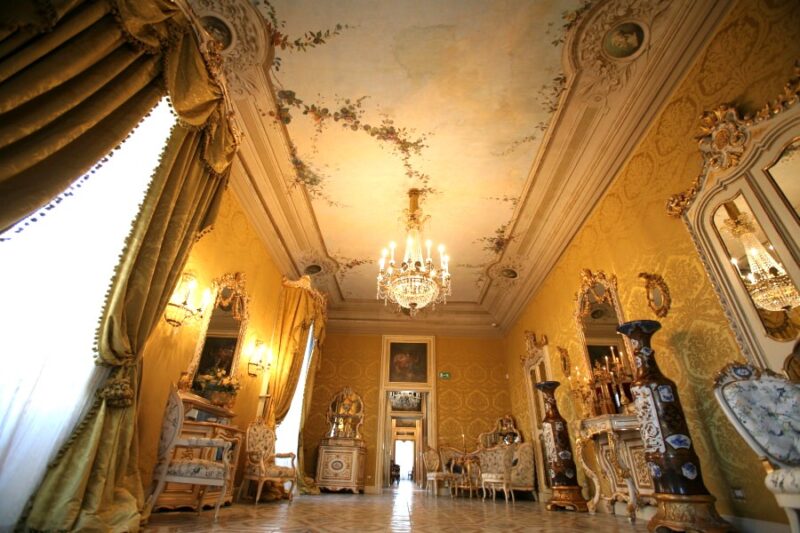Palazzo Francavilla
Via Ruggero Settimo, n. 2-14.
The Francavilla Palace has its entrance on via Ruggiero Settimo and overlooks Piazza Verdi in front of the Massimo theater. Built in 1783 in the Palermo countryside, it has two specific peculiarities: to have benefited from the urban expansion of the city carried out in 1778 and to have been purchased in 1801 by Saverio Oneto and Gravina Duca di Sperlinga, noble aristocrat of the time, very close to the Bourbon king of Naples, which for health reasons had been forced to leave its city palace and move to the countryside, beyond Porta Maqueda.
Luigi Majorca and Mortillaro Conte di Francavilla heir of the Dukes of Sperlinga, in 1893, to redo the facade of the building and give the final layout of the interiors, he called Ernesto Basile already known for having collaborated with his father G. Battista Filippo in the construction of the Teatro Massimo . The great architect and other talented artists who collaborated with him did not miss the opportunity to demonstrate to the cultured and wealthy client the value of their professionalism.In addition to the façade and the two large atriums, Basile designed the furniture in the entrance hall and the shop windows where the clothes of the ladies and noblemen of the family are exhibited. He also furnished the gallery painted by Giuseppe Enea, an example of one of the most beautiful florals of the Palermo Liberty.
The vaults of the corner lounges were frescoed by Rocco Lentini, Luigi Di Giovanni and Giuseppe Enea who were considered the most prominent artists of the period. But the atmosphere of the last Sicilian Leopards is relived by entering the Majorcan library designed by Basile. (Text: http://www.palazzofrancavilla.com/)
Property bound under the law 1089/1939. (PALAZZO SPERLINGA - FRANCAVILLA PECORARO)
download decree:
| FROM n.1205 of 18.07.1980 |
Card insertion: Ignazio Caloggero
Photo: web
Information contributions: Ignazio Caloggero Web,
Note: The populating of the files of the Heritage database proceeds in incremental phases: cataloging, georeferencing, insertion of information and images. The cultural property in question has been cataloged, georeferenced and the first information entered. In order to enrich the information content, further contributions are welcome, if you wish you can contribute through our area "Your Contributions"



